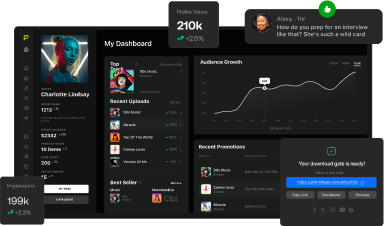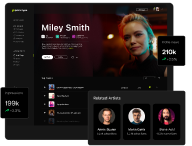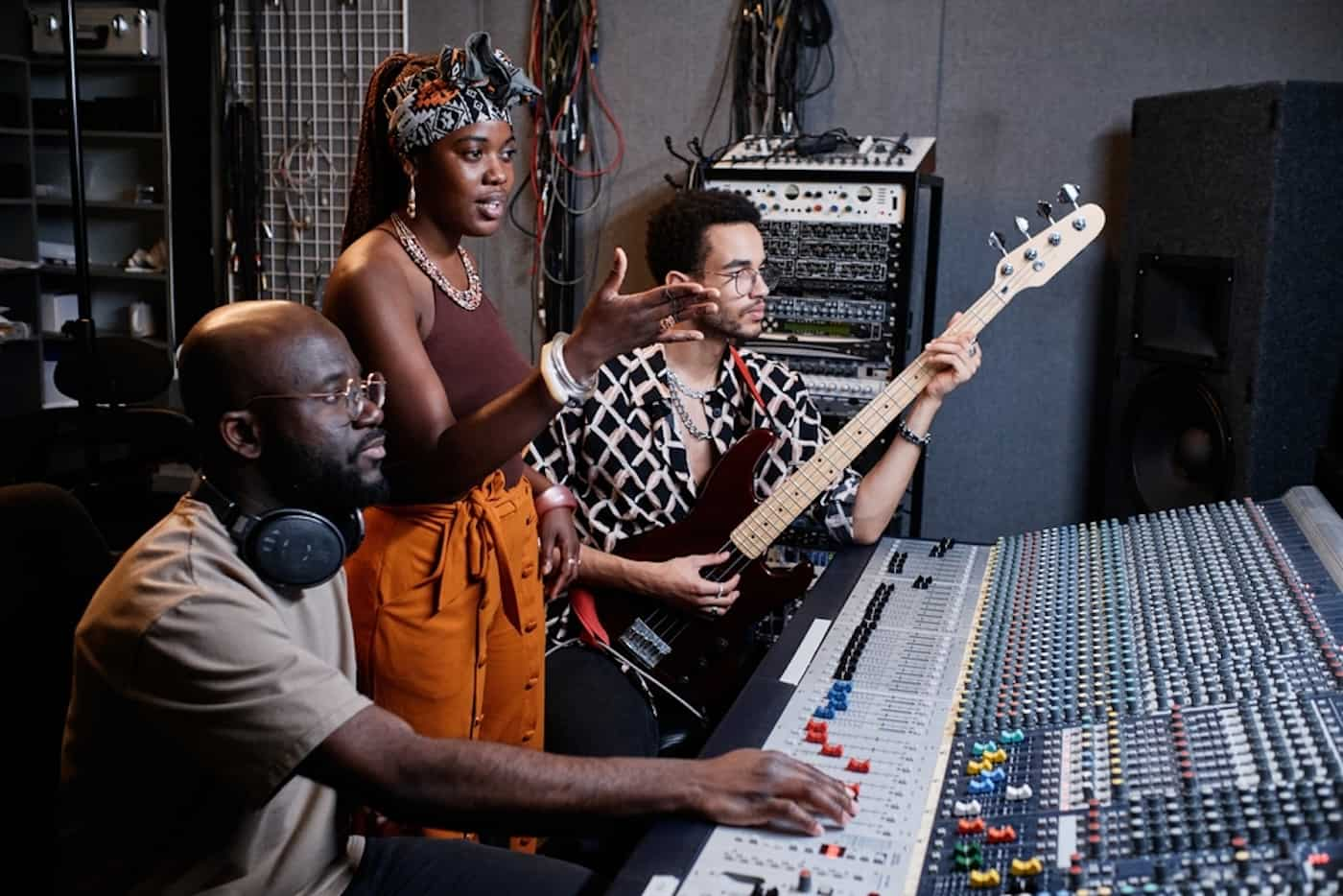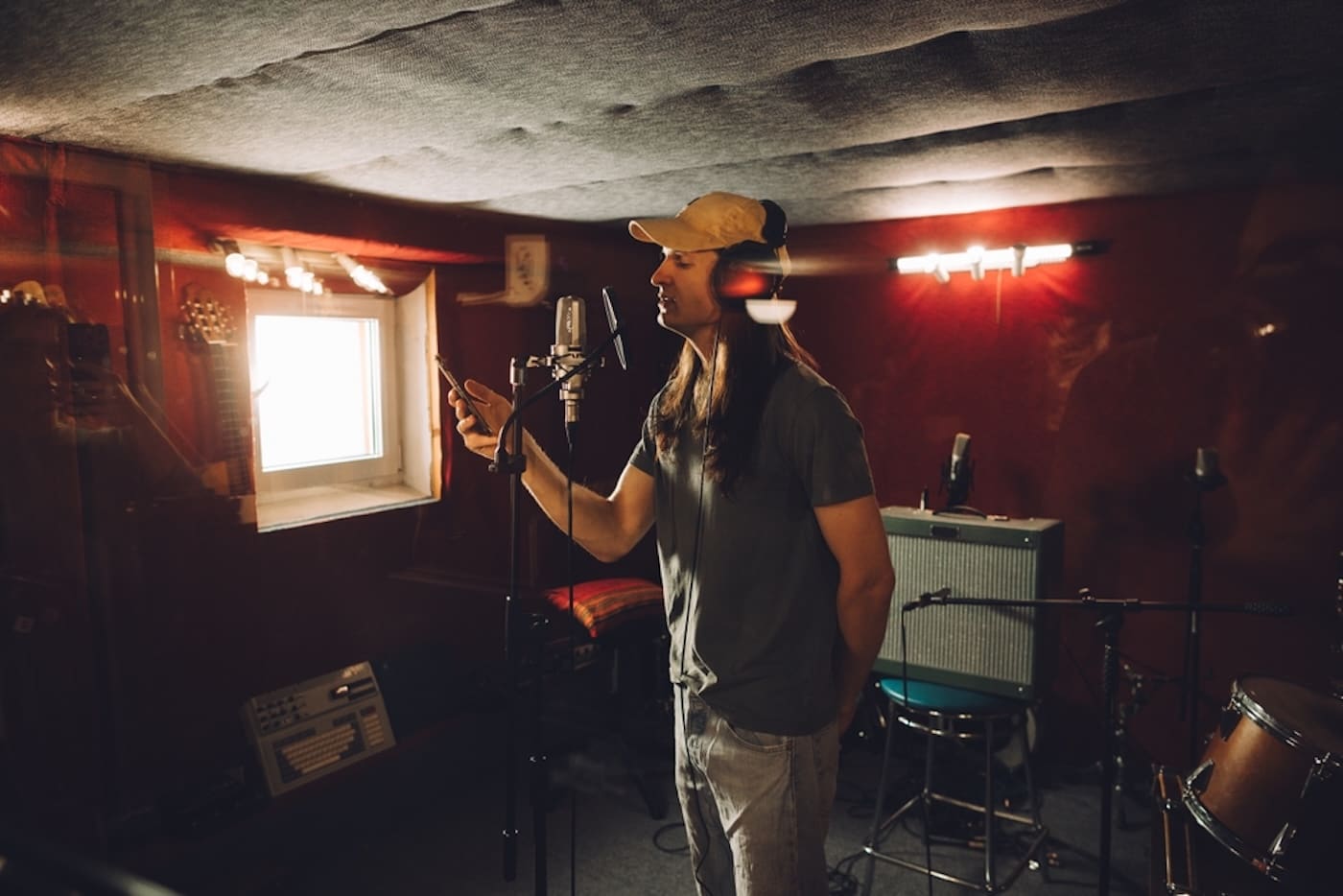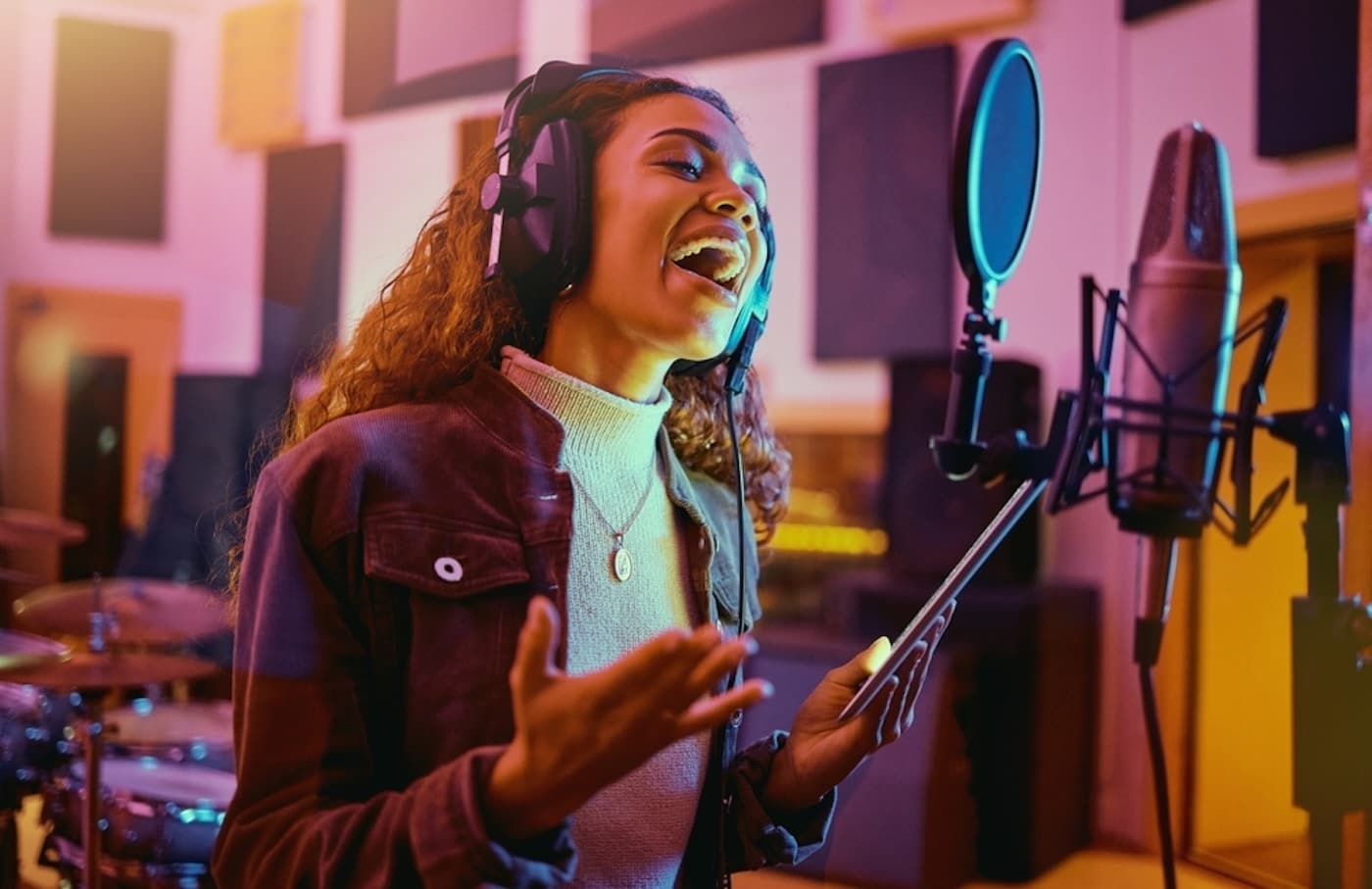
Releasing new music is one of the most exciting moments in an independent artist’s journey, yet the process can be confusing for first-timers.
Independent artists now have access to a wide range of tools and resources that make each step easier to manage and help ensure a professional, impactful release.
This guide explains exactly how to release a song as an independent artist, covering everything from finalizing your track to distribution and promotion.
Get Early Access
To Promo Hype
Quick Overview: What You Need to Release a Song
Learning how to make music is the first step toward becoming a fully-fledged independent artist embarking on a music career.
Before we dive into the details of releasing music on physical media and major streaming platforms, here’s what you’ll need:
- Finished and mastered audio file: The finished song must be finalized with thorough mixing and mastering and exported as the correct audio file formats for distribution.
- Cover artwork: Any new release should be distributed with original cover artwork, saved as a high-resolution image for media outlets.
- Artist bio: Each new music release should include an artist profile, with a written bio, links to your website and social media pages, and press photos.
- Song press release: Specific details about the release date and the song’s genre, themes, and lyrics can be shared via a press release.
- Marketing plan: Creating and implementing a strong marketing plan is equally essential to ensure your new song reaches as many potential fans as possible.
You can research the best music producers of all time and see how they present their new music and approach the distribution process.
Learn more: How to start producing music.
How To Release A Song For Beginners: Step-By-Step
If you’ve just finished your first song and are ready to take the next step and distribute your work, the process is relatively straightforward.
Here’s how you can release your own music and capture the attention of new listeners and music industry professionals:
Step 1: Finalize Songwriting & Structure
Before you’re ready to release your new track, it’s vital to dedicate the time needed to polish the composition and arrangements.
A key aspect of writing a song is exploring unique ways to compose instrumentation and vocals that complement one another.
This means assessing the song structure to see what works, refining the arrangement until you’re pleased with the results.
For some artists, learning how to read sheet music can elevate this process, particularly when collaborating with other musicians.
Step 2: Record & Produce The Track
With the songwriting finalized, you’re ready to hit the recording studio and get the best possible takes of each song element.
If you can’t afford to hire a studio, seek out the highest quality microphones you can find to record lush vocals and accurately reproduced instruments.
Once the record sessions are concluded, transfer the files to your preferred digital audio workstation (DAW) to arrange and mix the elements.
This includes applying micro-level effects such as reverb and chorus, as well as macro-level production techniques for audio compression and EQ.
You can use free music production software like GarageBand and Audacity, or invest in a professional DAW like Pro Tools.
Essential resource: The 10 best DAWs.
Step 3: Create Artwork & Visual Assets
Every new release requires visual assets that stand out on the screen and pique the interest of potential fans.
This includes single or album artwork, songwriter or band logos, and other assets, such as profile photos, for press releases.
If you’re unsure which style to adopt, spend time researching iconic album covers to see which artists in your style use them.
You can hire a professional artist or graphic designer to work on these assets, or use software like Canva and Photoshop to create your own.
Before settling on art and designs, gather feedback from your peers or share concepts on social media to gauge fan reaction.
Step 4: Build Your Online Presence
Creating visual assets is equally important for building an online presence as it is for directly promoting your new song.
Logos and other brand elements can be used on your band website, social media profiles, and in assets such as electronic press kits.
Use your band website’s home page to announce release dates, keeping it up to date with live performance photos and forthcoming songs.
Your band website can also drive traffic to your merchandise, raise awareness of upcoming gigs, and help you engage directly with fans.
It’s also instrumental to music marketing, as it promotes your music directly to industry professionals and music journalists.
Step 5: Produce Supporting Visuals
Additional visual assets can be created to complement the core artwork and logos necessary for a new song release.
These visual assets can range from music videos for the new track to short-form social media content such as Instagram Reels.
You can share your music videos on YouTube, and Spotify’s music video feature is also recommended for adding additional focus to your song.
Behind-the-scenes videos are also effective for giving fans insights into how you record music in the studio.
There are also easy-to-use visualizer tools for generating eye-catching animations, if dedicated music video production is beyond your budget.
Get Early Access
To Promo Hype
Step 6: Build Pre-Release Buzz
Whether releasing music or other forms of art, generating anticipation before launch day is vital for building awareness.
It begins by setting a release date, which can generate buzz through a countdown on your artist website.
The next step is to implement a marketing plan and build anticipation through teasers and social media ad campaigns.
Many established acts perform gigs in the run-up to a release, providing hardcore fans with early access to the song.
Step 7: Set Up Pre-Saves & Playlist Outreach
Another common practice artists engage in is pre-saves, which allow fans to add upcoming songs to their libraries ready for release day.
It’s easy to do and is a core component of any overarching marketing initiative, boosting visibility for the initial release.
Pre-saves can also be combined with early access for dedicated fans, allowing listeners to download or stream the song in advance.
Additionally, submitting your new track to playlists can be a game-changer for new artists, particularly if the playlist trends.
Step 8: Distribute The Song
Once you’ve generated anticipation and prepared all of your assets, the big moment has arrived when it’s time to distribute your song.
This is where you can make money as a music producer or songwriter by driving direct sales through downloads and streaming services.
Let’s break down the core distribution mechanisms and how each generates revenue from music royalties and other means:
Digital Music Sales
Digital downloads are another source of revenue for music releases, with artists earning money for each sale.
While this revenue source has declined with the rise of streaming platforms, it shouldn’t be overlooked when launching a new track.
Streaming Services
Uploading releases to streaming services is vital for collecting performance royalties for each time it’s played online.
There’s no limitation on how many services you can use, with Spotify, Apple Music, TIDAL, and other platforms all sharing revenue.
Physical Sales
Releasing music on physical media, such as vinyl records and CDs, is another excellent way to generate additional revenue from songs.
This can take the form of limited-edition releases, with vinyl record box sets highly sought after by dedicated music collectors.
Step 9: Promote On Release Day
While generating buzz in the build-up to a release is important, a robust release-day strategy can have a significant impact on launch.
This is when your focused efforts to promote your music kick in, from issuing press releases to implementing ad campaigns.
Once the song is public, engaging with your fans on social media is vital, as your song could go viral on TikTok and elsewhere.
Throughout the process, pay close attention to your analytics to gain a clear view of where your song is performing the best.
Step 10: Maintain Post-Launch Momentum
Following the song’s initial launch, you’ll need to keep the momentum going and engage your audience to gather feedback.
Post-launch gigs are excellent for maintaining interest, along with staggered releases of remixes and other song edits.
If your release is successful, you can capitalize on it by pitching to more playlist editors, reinvesting in ads, and encouraging fan-generated content.
This success can also be leveraged to reach out to record labels seeking artists and to find the right distributor for upcoming releases.
Read this next: How to submit music to radio stations.
Advanced New Release Strategies
We’ve covered the essentials for releasing music and getting the most impact from your first recording.
Here are some advanced strategies to consider adding to your release plan that may enhance the results further:
- Apply the Waterfall strategy: If you’re releasing music on longer formats like EPs and albums, you can stagger tracks using this sequential approach to maximize your content.
- Release remixes and edits: One of the benefits of music production is the ability to rework song elements into new music that can be incorporated into a release strategy. Remixes and other edits, such as radio- and club-friendly versions, can help you reach new fans on major platforms.
- Work on collaborations: Collaborating with other artists opens up access to a much wider network of music fans once the song is released.
- Use cross-platform diversification: This applies not only to distribution channels but also to using multiple social media channels and monitoring each for performance trends.
Check how other successful independent artists handle these processes and take on board approaches that align with your goals.
Legal & Copyright Essentials
Musical creativity and legal acumen don’t typically go hand-in-hand, but an understanding of the basics will help your release strategy.
Here are some of the core legal issues to be aware of when launching a music career and sharing great music with your fans:
- Trademarking a band name: While it isn’t mandatory to trademark a band name, it does grant additional protection in the event of any legal challenges.
- Understanding copyright law: A firm grasp of music copyright laws will strengthen your position when negotiating contracts and collecting revenue.
- Collecting music royalties: Copyright laws directly impact music royalties, so make sure you’re familiar with how collection societies are used, particularly if considering partnering with a record label.
If in doubt, seek out legal advice to provide additional clarity, particularly if you’re in the process of getting signed to a record label.
Helpful Tools & Resources
There’s no shortage of excellent tools and resources to help you start a music career, many of which are completely free to use.
Here are some essential tools covering production, distribution, marketing, and artwork design you can use:
- Music production tools: Music production has never been more affordable, thanks to free DAWs, VST plugins, and countless tutorials on platforms like YouTube.
- Digital distribution services: Simultaneous launches on Apple Music, Spotify, TIDAL, and other platforms can be streamlined with digital music distribution services.
- Performance and analytics tools: Powerful data analytics tools like Spotify for Artists and Chartmetrics provide a clearer understanding of performance and how to approach your next release.
- Marketing and visual design tools: Platforms like Canva are excellent for creating an artist logo, and many music marketing tools are available to promote your song.
If you’re struggling financially, you can apply for music grants to cover expenses related to equipment, recording, and other processes.
Related read: The 10 best music production schools.
FAQs About Releasing Music
To deepen your understanding of the music release process, here are our answers to the most frequently asked questions.
How much does it cost to release a song?
The cost of releasing music varies considerably, from free and budget-friendly options to high costs associated with professional production.
You can save money by using free production tools and distribute yourself, or pay for studio time and professional mixing and mastering.
What is the 80/20 rule in songwriting?
The 80/20 rule in songwriting states that 80% of a song’s impact comes from 20% of its core elements.
You can apply this principle in conjunction with other songwriting advice from successful musicians and artists.
Where can I post my song and get paid?
Earning money from your music comes from many sources, including digital streaming, physical sales, and music licensing.
Consider posting your songs on platforms like Bandcamp and using digital music distribution services to get them launched on streaming services.
Summary
Releasing music successfully requires a clear, structured approach that helps you build a strong and recognizable artist presence.
A well-planned release strategy ensures your music stands out and reaches the right listeners.
By learning from each release, you can refine your process and continue growing as an independent artist.
Get Early Access
To Promo Hype
Join Promo Hype
